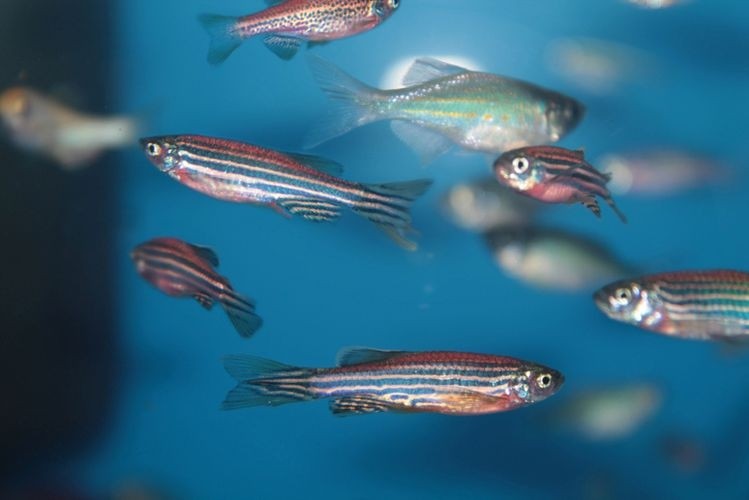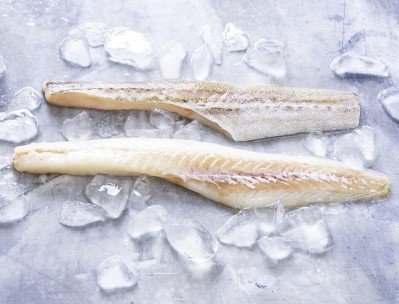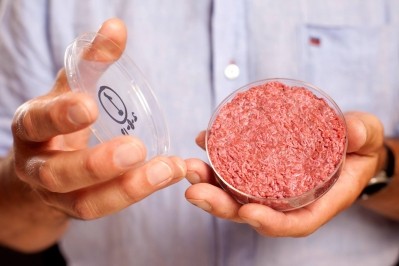Lean fish have advantages over meat and poultry for cell-cultured protein production, claims nonprofit

In a call with researchers, industry stakeholders and the media on Friday as the emerging cell-based meat industry was engaged in a debate over the environmental footprint of its production methods prompted by an article in Frontiers in Sustainable Food Systems, Clean Research CEO Alain Rostain said there were some good reasons why lean fish (fish with little or no fat in their tissues) were a good place to start.
“There are species of fish that have very little or no adipose tissue in the fillet that we eat and it seemed to me [when he started researching this last year] that with one less cell type to think about, it would be easier to grow.”
Why lean fish?
For a start, said Rostain, who noted how little money had been invested into cell-based aquaculture research, some fish cells can grow at room temperature (whereas cow or chicken cells need higher temperatures to grow), reducing the energy inputs needed to cultivate them.
More generally, however, he said, "Fish don’t generally keep a temperature, therefore their cells naturally operate and grow in a wider range of temperatures. This is likely to be advantageous and could show up as a reduced-energy requirement to maintain temperature within narrow acceptable ranges."
But he added: "We are not likely to grow our species at room temperature, but rather at temperatures that support the most effective overall bioprocess. For example, we should not assume that the same temperature is going to be ideal for doubling cells and for building muscle."
Second, lean fish, which has 1-2% muscle fat or less in the parts typically harvested for food, could also be potentially simpler to cultivate than more fatty fish such as Bluefin tuna and salmon, in that growing skeletal muscle tissue alone (without co-culturing fat cells) may suffice in replicating the sensory profile of the real counterpart.
Third, fish cell cultures have simpler gas requirements than avian or mammalian cells, he said. They don’t need carbon dioxide, they require less oxygen (because dissolved oxygen levels are higher at the lower temperatures these cells can grow in), and the dissolved oxygen levels can be maintained at lower temperatures with less stirring (meaning the cells will experience less shear stress in a stirred tank bioreactor, for example).

Fourth, fish muscle tissue has less vasculature than say cow muscle, claimed Rostain, meaning it could be easier to grow in 3D structures due to a reduced requirement for extensive vasculature (or its technological equivalent – ie. something that will allow nutrients in the growth media to reach all the cells in a 3D structure in the absence of circulating blood).
Finally, the regulatory pathway to cell-based fish may be a little clearer (except for catfish) as it falls under the sole jurisdiction of the FDA (whereas meat and poultry will involve the USDA as well), he said.
Why zebrafish?
So which lean fish species might make a good starting point?
After evaluating multiple lean options from cod to tilapia, Clean Research chose zebrafish (Danio rerio) as its initial target species, in part because its genome has been fully sequenced and it offers the advantages of an extensive research toolkit, which enables targeted molecular manipulations, should that be desirable, said Rostain.
The zebrafish embryonic stem cells also have rapid cell division times that should result in faster R&D and production timelines vs other species, he claimed.
“It’s a huge advantage from a production point of view. A bioreactor could be 50 times smaller and create the same output in a day, and if a bioreactor is smaller, it’s much easier to control the process inside of it. We’re talking about faster development and easier and cheaper manufacturing than other fish species.”
He conceded that consumers are not very familiar with zebrafish as they have not been commercialized as a food source, but said that if cell-based zebrafish do not deliver the sensory attributes consumers want, the focus could change to another lean fish species such as tilapia.
Clean Research does not have any backers yet, he said, “We’ve done this on a shoestring budget."
However, he added: "But we’ve set up a University of Washington clean research fund, a 501c3 charity that we and you can contribute to directly, and 100% of the gifts go to Dr David Mack's lab [which works on stem cell technology and regenerative medicine] no overheads, no indirects, to be used at his discretion to support the study of zebrafish, with no strings attached. And we hope to do this with other universities, and we hope to engage with others in this model of open science research."
GFI advisor: Fish cells, depending on the species, can grow at room temperature or lower
Asked to comment on Rostain's arguments, Elliot Swartz, PhD, academic research advisor at nonprofit the Good Food Institute, which promotes plant-base and cell-based meat, told FoodNavigator-USA that, "Fish cells, depending on the species, can grow at room temperature or lower, including temperatures used for refrigeration. Thus, selection of a species that can grow at ambient room temperature would likely be best, as energy requirements may otherwise have to be used for cooling."
He added: "I think they cite good evidence that lean fish cluster together in terms of flavor profile versus fatty fish. This makes sense as fat contributes a lot to the sensory profile. Thus, just generating cell-based lean fish skeletal muscle tissue may suffice in replicating the sensory profile of the real counterpart. Any low percentage of fat in a final product could perhaps be replaced by fat from plants, for instance, without impacting the flavor, and this could be easier to do in a lean fish product versus fatty fish. These claims would need to be empirically validated, however."
Simpler gas requirements?
As for the contention that fish cells have simpler gas requirements, he said: "It will be interesting to see if all of this holds true, as it could be an advantage for fish."
Asked if producing 3D lean fish tissue might be easier than producing, say, a beef steak, he said:
"The main advantage in terms of 3D replication that fish meat may have is the repeated patterning of the tissue and the low fat content, especially in leaner fish. You can imagine that it would be a lot easier to structure a scaffold that replicates the ‘flakiness’ of a fish fillet composed primarily of muscle versus the stochastic marbling of interwoven muscle, fat, and connective tissues in a beef steak."
Doubling times in vivo not necessarily the same in vitro
So what about the choice of zebrafish as an initial target species, and the claims that the cell division speed was notably faster than that of other species?
According to Swartz: "Starting with a well-characterized organism such as zebrafish should bode well, especially when building out initial R&D."
But he added:"The doubling times cited in their paper were sourced from embryos in vivo. Cell division during this time is rapid as a single cell splits into many progeny cells with little addition of actual biomass. These features are not necessarily recapitulated in vitro."
Finless Foods: We also started with zebrafish... but no one eats it
Mike Selden, co-founder at cell-based fish company Finless Foods, told FoodNavigator-USA that his company had also started its research with zebrafish (an aquarium fish), but noted that it had moved onto other species because consumers are not familiar with it as a commercial food source.*
He also agreed with Rostain that you can grow many fish cells without using carbon dioxide, adding: "This is true, we don't use gas leads of any sort ever."
One industry source added: "A 5% CO2 atmosphere is mainly used to balance the pH of the growth medium. This is true for fish and mammalian cell cultures. One can grow cells without it if a buffer system is added to the medium (i.e. HEPES)."
Several start-ups are working on cell-based seafood, including Shiok Meats in Singapore; and Finless Foods, BlueNalu, and Wild Type in the US.
*While zebrafish is best known as an aquarium fish, it is consumed in some parts of the world including India, noted Dr John Postlethwait, a professor in the biology dept at the University of Oregon who has spent many years studying zebrafish.
"When we went to India looking for wild zebrafish, I was amazed at the numbers of zebrafish for sale at little snack shacks along the highway. Zebrafish are incredibly numerous in the places we went in North East Hills. Millions in the rice paddies. They pack them in oil with some spices."
Further reading:
- The ‘world is watching’ the cell-based meat industry, says Memphis Meats VP: ‘Subpar early products can stigmatize an entire category for decades to come’
- ‘Henry Ford did more for horses than animal rights activists ever did… technology has enabled us to align our ethics with our behaviors.’ Paul Shapiro talks cell-based meat
- From edible scaffolding to bio-printing: What would an industrial-scale cell-based meat plant look like?
- Cell-based fish: A Novel approach to seafood production and an opportunity for cellular agriculture.


















